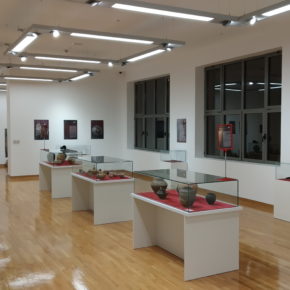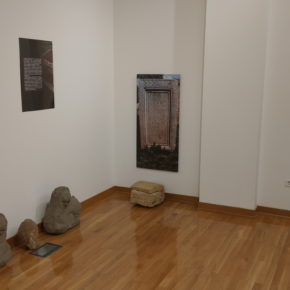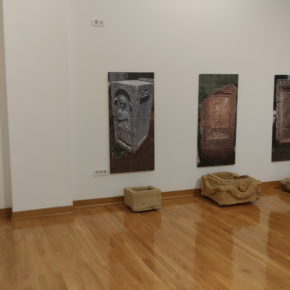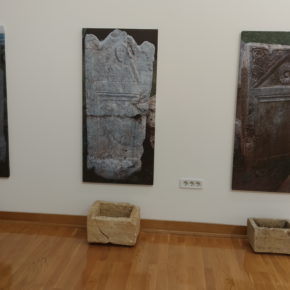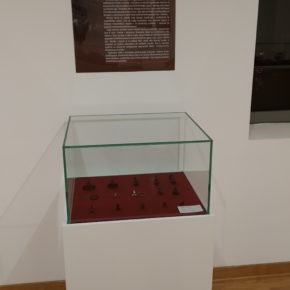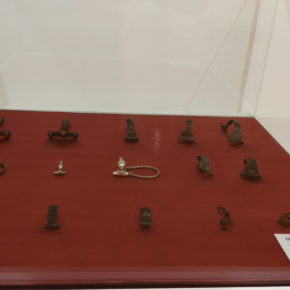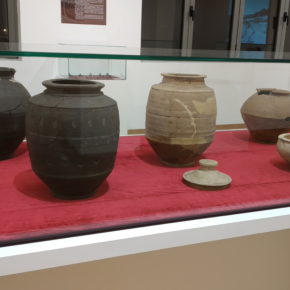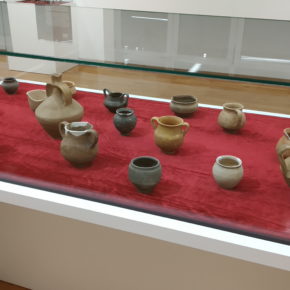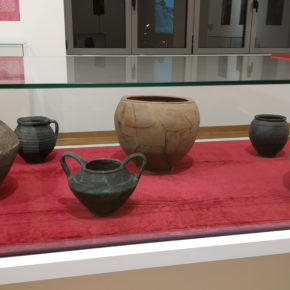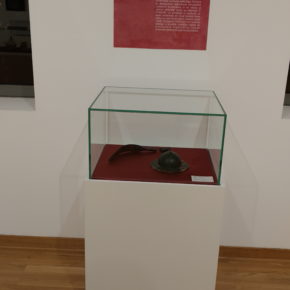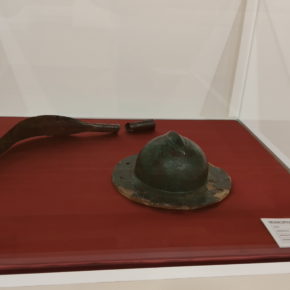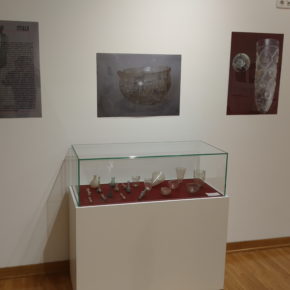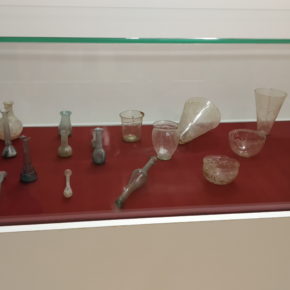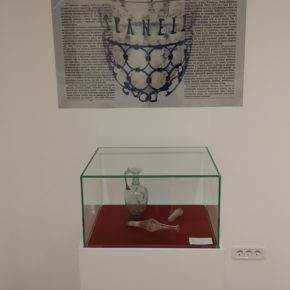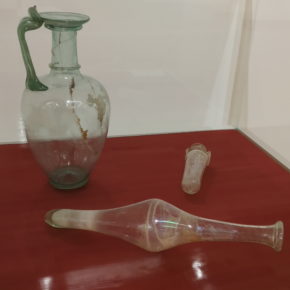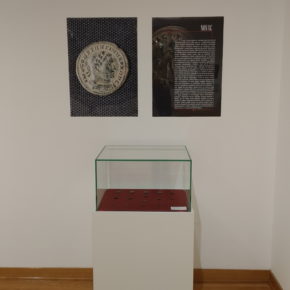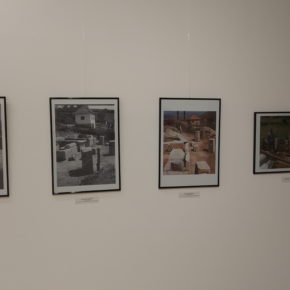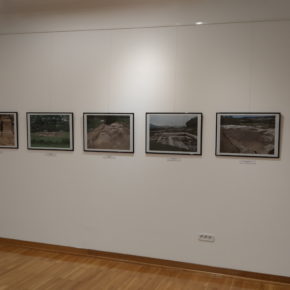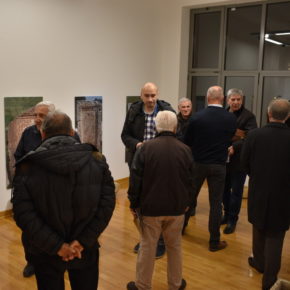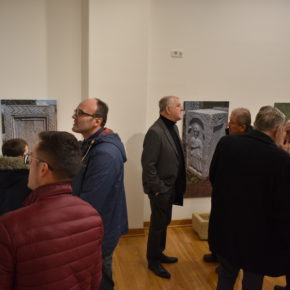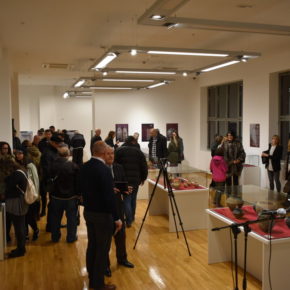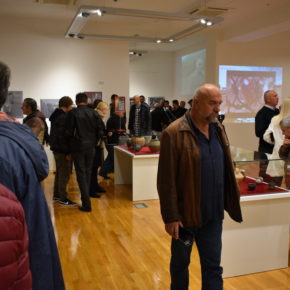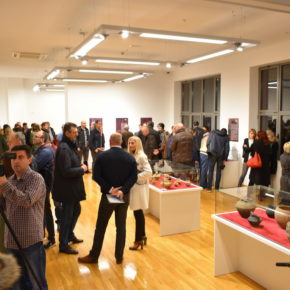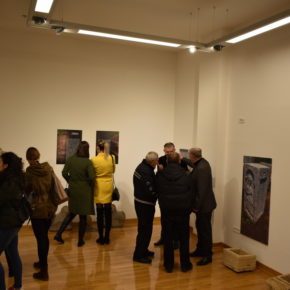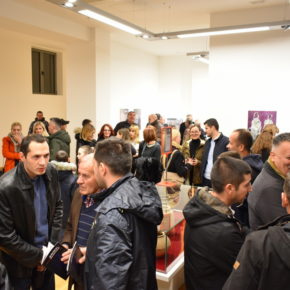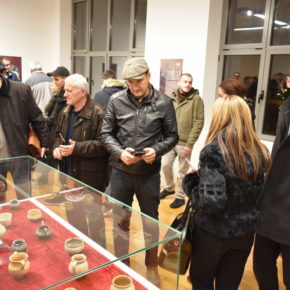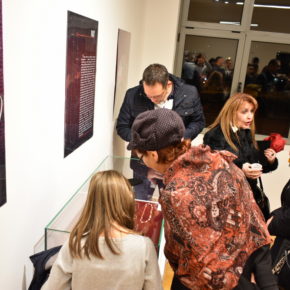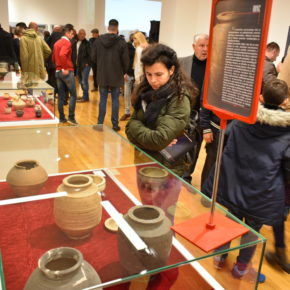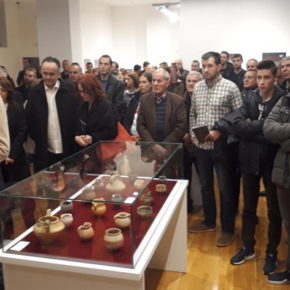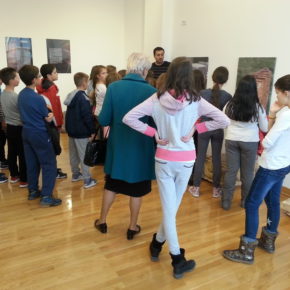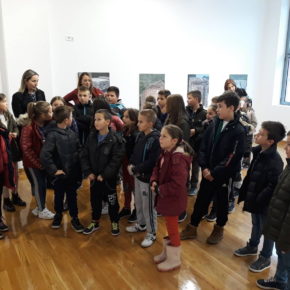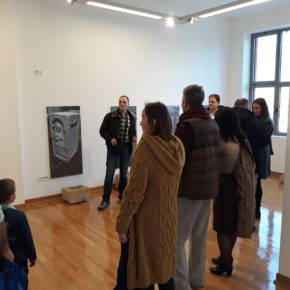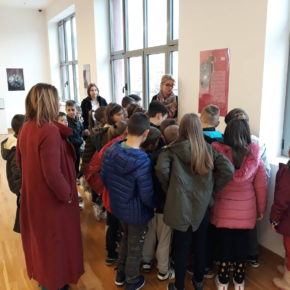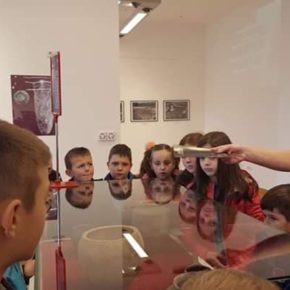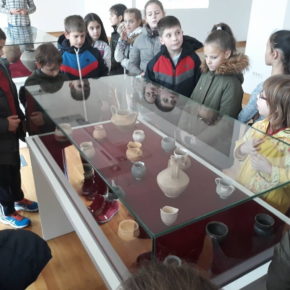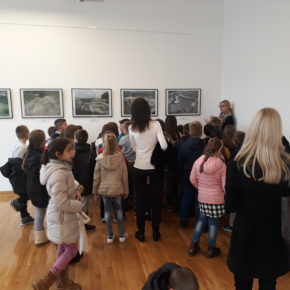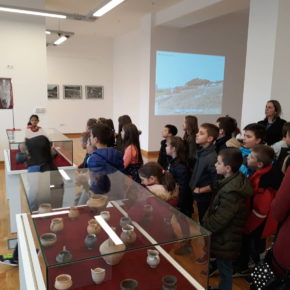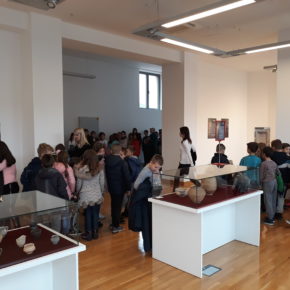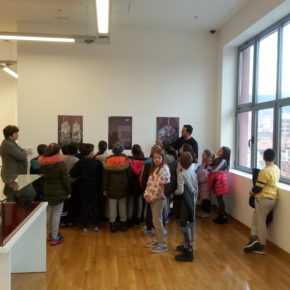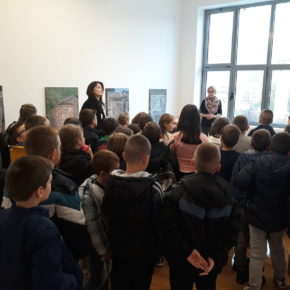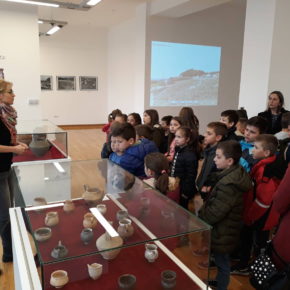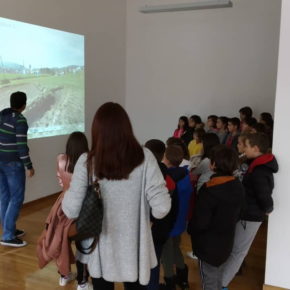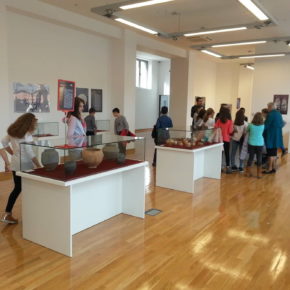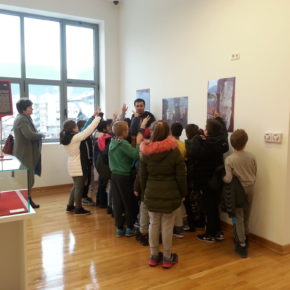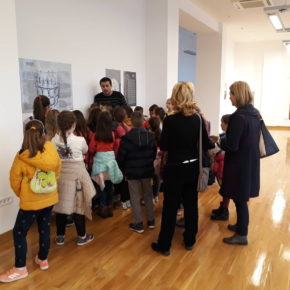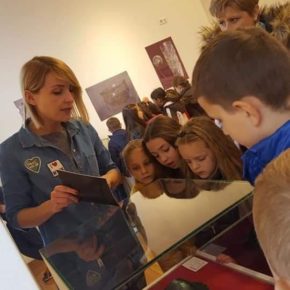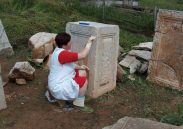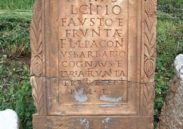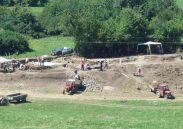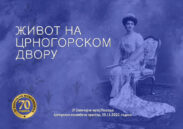The Regional Museum Pljevlja
 The Regional Museum Pljevlja was opened in 1952. The museum premises consist of several rooms of the Centre for Culture in Pljevlja. The richness and diversity of holdings imposes the need for finding the proper premises to meet the basic requirements of modern museums. The Museum holds, collects, processes and presents museum items from the area of Pljevlja. The holdings have been classified into several collections: archaeological, ethnographic, historic, numismatic and artistic. The extremely rich fund and large study material from the previously investigated sites, virtually continuously monitors the history of human life in the region of Pljevlja area of the early prehistory to the present.
The Regional Museum Pljevlja was opened in 1952. The museum premises consist of several rooms of the Centre for Culture in Pljevlja. The richness and diversity of holdings imposes the need for finding the proper premises to meet the basic requirements of modern museums. The Museum holds, collects, processes and presents museum items from the area of Pljevlja. The holdings have been classified into several collections: archaeological, ethnographic, historic, numismatic and artistic. The extremely rich fund and large study material from the previously investigated sites, virtually continuously monitors the history of human life in the region of Pljevlja area of the early prehistory to the present.
Valuable items from the archaeological collection illustrate the significance of archaeological sites in the area. The items found at the site of Medena stijena (rocks in the Ćehotina River Canyon) are of particular importance. The items found in this site belong to the cultures of early Palaeolithic, Mesolithic, Copper and Bronze Age. The stone tools from the oldest layers of Medena stijena show certain similarities with the excavations at Franchti Cave in Argolid Gulf in Greece. There are also remnants of an ancient town known among scientists as the Municipium S… Based on the displayed epigraphic monuments, it may be presumed that this town existed from the 1st–4th centuries AD. The monuments from this site are particularly interesting and significant for comprehending the development of the Roman art, here intermingled with the local, Illyrian- Celtic tradition.
The Ethnographic Department holds over 1,000 items representative of the material and spiritual culture of the local population. Valuable old costumes, embroidery, jewellery, weapons and items with pronounced artistic features, reflect well-developed craftsmanship.
The Historic Department houses the items related to the Balkan Wars and World War One and Two.
“Municipium S… – past, present and future”
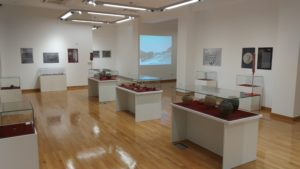
Pljevlja and its surroundings have a very rich history. Reliable findings show that the Ćehotina River valley was inhabited at latest around 30,000 BC. The oldest traces of human presence in the town area, a flint tool, had been found in the cave under Gospić Peak. The traces of settlements in the later stages of the Stone Age were found in two large archaeological sites called Mališina Stijena and Medena Stijena (stone tools and arms), dating to 12,000–8,000 BC. A big Neolithic open-air settlement, supposedly dating to the period between c. 6200 and 4500 BCE, was excavated in 2016. The excavation resulted in many pottery fragments with painted and unpainted wares and characteristic Neolithic tools. Archaeological findings from the Bronze Age testify to the lives of people in this area which were discovered in the village Gotovuša, about ten kilometres north-west from the town. There were found „tumuli“ (grave embankment of earth and stone), pins, buckles-fibula, spiral bracelets, rings of bronze and other objects. From this period is also one finding of rings and beads, in Kalušići. In the second half of the first millennium BC, this area was inhabited by Illyrian tribe Autariatae.
Excavations of Municipium S…, confirm the presence of Roman civilization. On several acres, under a thin layer of soil, lay the contours of the Roman city with walls, monumental building, city streets and necropolis. Situated at an important line of communication, it had strategic and economic importance, and was the centre of large military and administrative areas. Detailed archaeological excavations were carried out on two city’s necropolis between 1964 and 1975. Two Roman-city cemeteries were discovered and nearly 700 graves, many of them with inscribed monuments. These excavations represent the significant finds of a Roman municipium at Komini, near present-day Pljevlja, which sprang up in the central Balkan area far from the main Roman communications network. The settlement grew in Roman times in the valley through which the small Ćehotina river flows, a tributary of the river Lim. The municipium was situated in a plain enclosed by high mountains, not far from another big Roman settlement in present-day Kolovrat near Prijepolje. The Roman city existed, as the findings from the excavated cemeteries prove, for no longer than three and a half centuries, from the 1st to the 4th centuries AD. There is no doubt that the settlement was granted municipal status. Citizens holding municipal offices appear in the inscriptions, but the actual name of the municipium has not yet surfaced – either in inscriptions or in literary evidence. It is believed that the abbreviation ‘S’ in one inscription refers to the name of the municipium, although this is not proved by any other inscription. Despite the strong Roman influence, Illyrian element has long been held, which gradually accepted Roman culture, but also managed to maintain its individuality. Necropolis II is more extensive and richer with archaeological material. Both can be dated between the second and fourth century AD. In the necropolis II have been found items
All the moving material from this site, related to the Roman religion, culture, economics and many articles for daily use, is preserved in the Regional Museum in Pljevlja. The museum exhibition “Municipium S… – past, present and future” presents part of this extremely rich archaeological material.
Diatreta from Pljevlja

The star attraction of the Museum is Diatreta from Pljevlja, an exquisite glass ‘cage cup’ from the 4th century AD.
Diatreta from Pljevlja is a well-preserved cage cup from the 4th century AD. It is made of transparent colourless glass with a cobalt blue web. A cage cup consists of an inner beaker and an outer cage or shell of decoration that stands out from the body of the cup, to which it is attached. Pljevlja diatreta is a very rare example of a complete Roman cage cup , or diatretum. It comes from a famous workshop in Cologne.
Almost complete. In the inscription, the letter “O” is damaged and the “M” is missing, and both the middle and bottom rows of meshes and the rosette have sustained damage. Found during the excavation of a Roman cemetery at Komini (Roman Municipium S) near Pljevlja, northeastern Montenegro, in 1975. The object is a bell-shaped beaker with a shallow raised molding at the junction of the rim and the wall, bellow which is a Latin inscription: “VIVAS PANELLENI BONA(M)” (May you live, Panhellenius, in good memory). Beneath the inscription is a cage consisting of three rows circular meshes, with a central sexfoil rosette at the bottom. The uppermost row contains the same number of oval meshes, and the bottom row contains six heart-shaped meshes. Both the inscription and the cage are deep blue.
The beaker was found in a stone and brick-lined grave, which had been robbed before the excavation. The grave contained a lead sarcophagus without a cover. in the sarcophagus was the skeleton of a man, about 50 years old. The offerings that had not been robbed were four glass vessels, including the cup.
Diatreta from Pljevlja (cage-cup, beaker with inscription)
H. 14.9 cm, D. 13.3 cm
Deep blue over colourless

